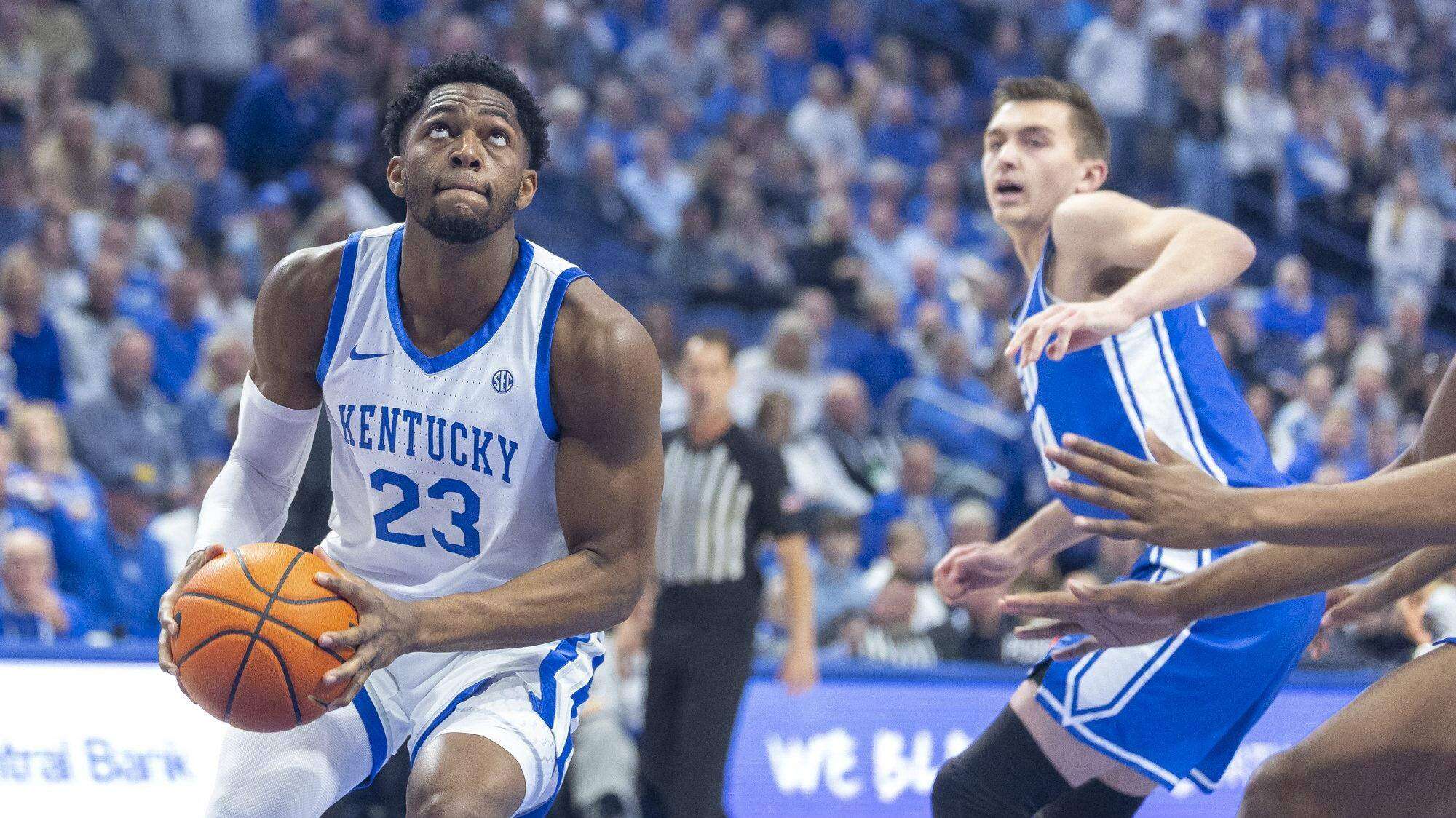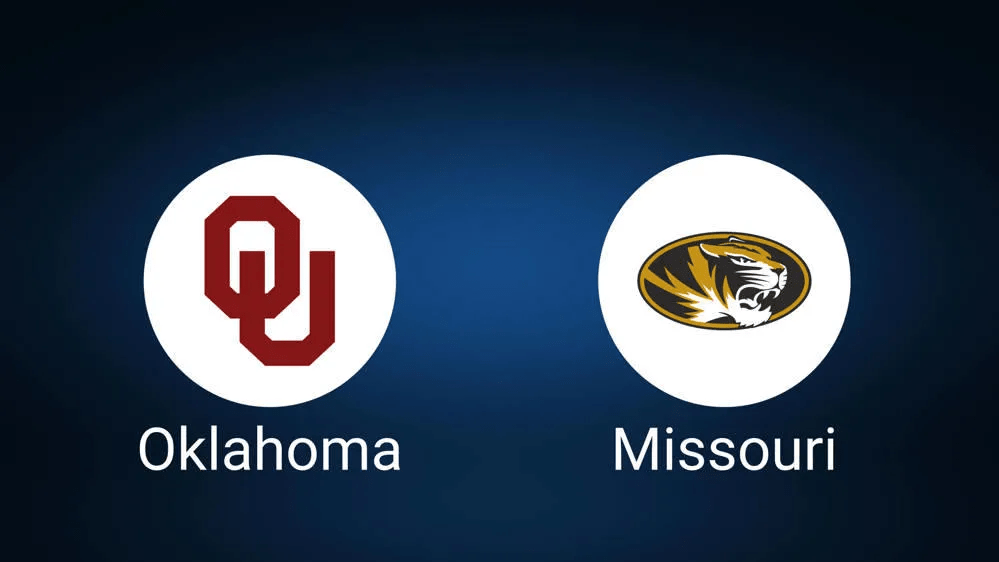Arizona vs. Arizona State Predictions: Territorial Cup Analysis, Odds & Betting Preview for November 28
The 2025 Territorial Cup rivalry game promises to be one of the most compelling matchups of the college football

The 2025 Territorial Cup rivalry game promises to be one of the most compelling matchups of the college football season when the Arizona Wildcats travel to face the Arizona State Sun Devils on Friday, November 28, 2025. Both teams enter this historic rivalry with identical 8-3 records, setting the stage for a battle that could have significant implications for bowl positioning and bragging rights in the Grand Canyon State.
This comprehensive preview examines every aspect of this critical Big 12 showdown at Mountain America Stadium in Tempe, Arizona. We’ll break down team performance, analyze key matchups, explore statistical advantages, and provide insights into the betting markets available on bet105.
Want to make sure you never miss expert college football analysis? Bookmark this page and check back regularly for the latest insights on Big 12 football and rivalry week matchups.
Arizona vs Arizona State Early Analysis
Here are our early thoughts on the spread and total for this week’s Territorial Cup clash. This analysis focuses on team strengths, recent performance trends, and key statistical indicators that could determine the outcome of this heated rivalry game.
Early Arizona vs Arizona State Spread Analysis: Arizona State +1.5
The Arizona State Sun Devils enter this rivalry matchup with significant momentum after their dominant 42-17 victory over Colorado. The performance showcased exactly what makes this Sun Devils team dangerous: a multifaceted offensive attack that can beat you through the air and on the ground.
Running back Raleek Brown’s 255-yard rushing performance against Colorado wasn’t just impressive—it was historically significant. That kind of production demonstrates the Sun Devils’ ability to control the line of scrimmage and impose their will on opposing defenses. When Arizona State can establish the running game early, it opens up play-action opportunities and keeps defenses honest, creating favorable matchups for quarterback Jeff Sims.
The Wildcats defense will face a significant test trying to contain Brown and the Sun Devils’ rushing attack. Arizona ranks 45th nationally in rushing defense, allowing 142.7 yards per game on the ground. While that’s a respectable figure, it’s important to note that Arizona State’s offensive line has been creating massive running lanes in recent weeks, and Brown has shown the ability to break tackles and turn modest gains into explosive plays.
For Arizona, the offense has shown balance and consistency throughout the season. Quarterback Noah Fifita has developed into a reliable signal-caller who makes smart decisions and takes care of the football. His 183 yards and touchdown against Baylor demonstrated his ability to manage the game effectively, even if the passing numbers weren’t overwhelming. The key for Fifita will be avoiding turnovers in a hostile road environment.
The Wildcats’ ground game, led by Ismail Mahdi, provides a complementary threat that keeps defenses from focusing solely on stopping the pass. Mahdi’s 93-yard, one-touchdown performance against Baylor showed his ability to find running lanes and finish drives. Against Arizona State’s defense, which has shown some vulnerability against the run, establishing Mahdi early could be crucial for Arizona’s success.
The spread of Arizona -1.5 essentially makes this a pick’em game with a slight lean toward the Wildcats. However, several factors suggest Arizona State is well-positioned to not only cover but potentially win outright. The home-field advantage at Mountain America Stadium cannot be understated in a rivalry game of this magnitude. The Sun Devils’ fans create an intimidating atmosphere, and playing in Tempe has historically provided a significant edge in this series.
Moreover, Arizona State’s recent performance trend suggests a team hitting its stride at the right time. The comprehensive victory over Colorado wasn’t a fluke—it was the culmination of steady improvement throughout the season. The offensive line has gelled, the running game has found its identity, and the defense has shown the ability to create turnovers at critical moments.
Arizona State’s defensive unit will need to focus on pressuring Fifita and forcing him into uncomfortable situations. The Sun Devils rank in the top half of the Big 12 in sacks and quarterback pressures, and getting to Fifita early could disrupt the Wildcats’ offensive rhythm. If Arizona State can force Arizona into obvious passing situations, it plays directly into the Sun Devils’ strengths on defense.
The betting market appears to be slightly favoring Arizona based on their overall body of work this season, but the value lies with Arizona State at +1.5. Getting points with the home team in a rivalry game, especially when that team is riding significant momentum, presents an attractive opportunity for bettors.
Early Arizona vs Arizona State Total Analysis: Over 48.5
The total of 48.5 points sets up an intriguing proposition for bettors. Both teams have shown the ability to score points consistently throughout the season, but they’ve also demonstrated defensive capabilities that could keep this game closer than some might expect.
Arizona’s offense has been productive all season, averaging 31.4 points per game. The Wildcats’ ability to score comes from their balanced attack—they can hurt you through the air with Fifita’s arm or on the ground with Mahdi’s legs. This versatility makes them difficult to defend because coordinators can’t simply stack the box or drop into coverage; they must respect both elements of Arizona’s offensive game plan.
The Wildcats’ receiving corps has shown the ability to make plays downfield. Against Baylor, Arizona’s receivers created separation and made contested catches when necessary. If Arizona State chooses to load the box to stop Mahdi, Fifita has proven capable of making defenses pay through the air. The key will be whether Arizona’s offensive line can provide enough time for routes to develop and create running lanes against an aggressive Arizona State front seven.
Arizona State’s explosive offense presents an even greater scoring threat. The Sun Devils’ 42 points against Colorado demonstrated their ability to attack defenses in multiple ways. Jeff Sims has shown significant growth as a passer this season, completing 64% of his passes while limiting turnovers. His 206 yards and two touchdowns against Colorado were efficient and timely, demonstrating his ability to make throws at critical moments.
However, the real story for Arizona State is Raleek Brown and the ground game. When a team can rush for 255 yards from one player, it fundamentally changes how offenses operate. The threat of Brown breaking a long run on any play forces defenses to commit extra defenders to run support, which opens up passing lanes and creates favorable one-on-one matchups on the outside.
The Sun Devils’ offensive scheme under their coaching staff has emphasized attacking defenses vertically while maintaining balance with the running game. This approach has proven effective throughout the season, and against Arizona’s defense, which ranks 68th nationally in total defense, there should be opportunities to move the ball consistently.
Defensively, both teams have shown capability but also vulnerability. Arizona’s defense allows 24.8 points per game, which ranks in the middle of the Big 12. The Wildcats have had moments of excellence, particularly in their secondary, but they’ve also been susceptible to explosive plays. Against Arizona State’s offense, which thrives on creating big plays through Brown’s running ability and Sims’ deep passing, Arizona’s defense will be challenged to maintain gap integrity and prevent chunk plays.
Arizona State’s defense has similar statistics, allowing 25.1 points per game. The Sun Devils have been better against the pass than the run this season, which could prove problematic against Arizona’s balanced attack. If the Wildcats establish Mahdi early, it could create favorable play-action opportunities for Fifita to attack downfield.
The pace of play will be a critical factor in determining whether this game goes over or under the total. Both teams prefer to play at a moderate tempo, but Arizona State has shown a willingness to quicken the pace when they get the running game going. If Brown finds early success and the Sun Devils can sustain long drives while still scoring touchdowns rather than settling for field goals, the points could accumulate quickly.
Weather conditions at Mountain America Stadium in late November should be favorable for both offenses. The stadium’s climate-controlled environment eliminates wind as a factor, and the late November temperatures in Tempe are typically mild, providing ideal conditions for offensive football.
Rivalry game dynamics add another layer to consider when evaluating the total. These games often feature heightened emotions and intensity, which can lead to either conservative play-calling or aggressive, all-out offensive approaches. Given both teams’ offensive identities and the stakes involved with bowl positioning, we’re more likely to see offensive coordinators attacking rather than playing conservatively.
Historical trends in the Territorial Cup rivalry show that recent meetings have featured competitive, offensive-oriented games. While defense and rivalry intensity matter, both teams have enough offensive weapons to move the ball and score points. The combination of Arizona’s balanced attack and Arizona State’s explosive playmakers suggests a game with multiple scoring drives from both sides.
The Over 48.5 presents value when considering both teams’ offensive capabilities and defensive vulnerabilities. We’re projecting a game in the 26-24 or 28-21 range, which would push the total over comfortably. For bettors looking at the total, the Over appears to be the stronger play, though the margin isn’t enormous.
Team Deep Dive and Statistical Analysis
Arizona Wildcats: Offensive Identity and Strengths
The Arizona Wildcats have built their success this season on offensive consistency and quarterback play that limits mistakes. Noah Fifita’s development as a starting quarterback has been one of the storylines of Arizona’s season. His ability to read defenses, make quick decisions, and deliver accurate passes has elevated the entire offense.
Fifita’s performance against Baylor exemplified his game management skills. While 183 yards and one touchdown might not jump off the stat sheet, the efficiency and decision-making behind those numbers tell a deeper story. Fifita completed 72% of his passes, didn’t turn the ball over, and made several critical third-down conversions that sustained drives and kept Arizona’s defense off the field.
The Wildcats’ passing game features a diverse receiving corps that can attack all levels of the defense. The slot receivers provide reliable underneath options for quick game concepts, while the outside receivers have the speed to stretch defenses vertically. Against Arizona State’s secondary, which has shown some vulnerability to quick passing concepts and screens, Arizona’s receivers should find opportunities to make plays in space.
Ismail Mahdi’s emergence as a featured back has given Arizona’s offense the balance it needs to be effective. Mahdi combines patience behind the line of scrimmage with the explosiveness to hit the hole quickly once it appears. His 93-yard performance against Baylor demonstrated his ability to gain yards after contact and fall forward for extra yardage. These qualities will be essential against an Arizona State defense that has shown the ability to penetrate into the backfield.
The offensive line has been a strength for Arizona throughout the season. The group has shown the ability to pass protect effectively, giving Fifita the clean pockets he needs to operate efficiently. They’ve also demonstrated competency in run blocking, creating the running lanes that have allowed Mahdi to be productive. Against Arizona State’s defensive front, which relies on quickness and penetration rather than overwhelming size, Arizona’s offensive line should be able to hold up in both facets.
Arizona’s offensive efficiency has been notable throughout the season. The Wildcats rank in the top 40 nationally in third-down conversion percentage, demonstrating their ability to sustain drives and control the clock. This efficiency will be crucial against Arizona State, as limiting the Sun Devils’ offensive possessions could be key to victory.
Arizona Wildcats: Defensive Capabilities and Concerns
Arizona’s defense has shown improvement throughout the season, particularly in their ability to create turnovers and get off the field on third down. The Wildcats’ defensive line, while not dominant, has been disruptive enough to affect opposing quarterbacks’ timing and force hurried throws.
The secondary has been Arizona’s defensive strength this season. The cornerbacks have shown the ability to play press coverage and limit explosive plays downfield. Against Arizona State’s passing attack, which features vertical concepts designed to create one-on-one matchups, Arizona’s corners will need to be physical at the line of scrimmage and maintain tight coverage throughout routes.
However, Arizona’s run defense has been inconsistent at times. While the 142.7 yards per game allowed is respectable, the Wildcats have struggled when facing physical, downhill running attacks. Against Raleek Brown and Arizona State’s power running concepts, Arizona’s front seven will need to maintain gap integrity and tackle efficiently in space.
The linebacker corps for Arizona has been solid in coverage against tight ends and running backs, but they’ve sometimes struggled to fill gaps quickly against inside running plays. This could be problematic against Arizona State’s offense, which uses misdirection and gap schemes to create confusion at the second level.
Arizona’s defensive coordinator will likely focus on loading the box to stop Brown and forcing Jeff Sims to beat them through the air. This strategy makes sense given the Sun Devils’ offensive identity, but it also creates risk. If Arizona State can hit quick passes or screens when Arizona brings extra defenders near the line of scrimmage, the Sun Devils could create explosive plays that flip field position quickly.
Arizona State Sun Devils: Offensive Firepower and Scheme
The Arizona State offense has evolved into one of the Big 12’s most dangerous units, primarily due to the emergence of Raleek Brown as a true difference-maker at running back. Brown’s 255-yard performance against Colorado wasn’t just about volume—it showcased his complete skill set. He broke tackles, hit home runs, and demonstrated the vision to find cutback lanes when the initial play design broke down.
Brown’s success is built on several factors. First, Arizona State’s offensive line has improved significantly throughout the season. The group has developed chemistry and consistency, creating the massive running lanes that have allowed Brown to operate in space. Second, Brown’s patience and acceleration are elite. He doesn’t panic when the hole isn’t immediately there; instead, he presses the line, waits for blocks to develop, and then explodes through gaps with suddenness that defenders can’t match.
Jeff Sims’ development as a quarterback has been equally important to Arizona State’s offensive success. Sims came to Arizona State with a reputation as an athletic quarterback with arm talent but inconsistency issues. This season, he’s shown improved decision-making and accuracy, particularly on intermediate throws. His 206 yards and two touchdowns against Colorado demonstrated his ability to make plays when Arizona State needs to throw.
Sims’ dual-threat capability adds another dimension that defenses must account for. While he’s not running as frequently as earlier in his career, the threat of Sims keeping the ball on zone-read plays or scrambling when protection breaks down forces defenses to maintain discipline. Against Arizona, which will be keying on Brown, Sims’ ability to extend plays with his legs could create big opportunities.
The receiving corps for Arizona State has several playmakers capable of making contested catches and creating yards after the catch. The tight end has been particularly effective in the red zone, giving Sims a reliable target in scoring situations. Against Arizona’s defense, which has sometimes struggled with tight end coverage, this matchup could be crucial.
Arizona State’s offensive philosophy emphasizes attacking defenses with multiple tempos and personnel groupings. The Sun Devils will use heavy formations to signal run, then spread out into empty sets to create throwing opportunities. This diversity makes them difficult to defend because coordinators can’t settle into a single defensive package.
Arizona State Sun Devils: Defensive Structure and Matchup Concerns
Arizona State’s defense has been the unit that has required the most growth throughout the season. While the numbers don’t jump off the page, there have been moments when the defense has risen to the occasion and made game-changing plays.
The defensive line features quickness and penetration ability rather than overwhelming size. This group has been effective at getting into backfields and disrupting timing on run plays. Against Arizona’s offensive line, which emphasizes technique and positioning rather than mauling defenders, Arizona State’s defensive front should be able to create some negative plays.
The linebacker corps is athletic and capable in space, which will be important against Arizona’s passing game that features crossing routes and concepts designed to get receivers the ball in space. However, the linebackers have sometimes struggled to disengage from blocks quickly when diagnosing run plays, which could be problematic against Arizona’s zone-running schemes.
Arizona State’s secondary has been better than expected this season. The cornerbacks have shown the ability to play man coverage and limit explosive plays, while the safeties have been active in run support. Against Noah Fifita and Arizona’s receivers, the secondary will need to be disciplined in coverage and avoid giving up big plays that flip field position.
The key for Arizona State’s defense will be getting off the field on third down. The Sun Devils have sometimes struggled in third-and-medium situations, allowing conversions that extend drives and keep their offense on the sideline. Against Arizona, which converts third downs efficiently, Arizona State will need to win some of these critical situations to have success.
Arizona State’s defensive coordinator will likely employ multiple looks and pressures to keep Fifita uncomfortable. Given Fifita’s efficiency when working from clean pockets, creating pressure with four-man rushes or well-timed blitzes could disrupt Arizona’s offensive rhythm.
Key Matchups That Will Decide the Game
Raleek Brown vs. Arizona’s Front Seven
This is the single most important matchup in the game. Brown’s ability to break tackles and create explosive plays makes him Arizona State’s most dangerous weapon. If Arizona can limit Brown to less than 100 yards and prevent him from breaking long runs, the Wildcats significantly improve their chances of winning.
Arizona will likely load the box with eight defenders on early downs, forcing Arizona State to throw to move the chains. The question becomes whether Arizona State can hit quick passes to offset this strategy or if Brown can still produce despite facing loaded boxes.
The tackling technique of Arizona’s linebackers and safeties will be crucial. Brown’s elite change-of-direction skills mean that defenders must break down in open space and wrap up rather than attempting to deliver big hits. Missed tackles against Brown don’t result in three-yard gains—they result in 30-yard touchdowns.
Arizona’s Offensive Line vs. Arizona State’s Defensive Front
Arizona’s ability to protect Fifita and create running lanes for Mahdi will determine whether the Wildcats can sustain drives and control the clock. Arizona State’s defensive line will use quickness and stunts to create free rushers, testing Arizona’s offensive line’s communication and reaction time.
If Arizona’s offensive line can hold up in pass protection, Fifita should have time to work through progressions and find open receivers. However, if Arizona State can generate consistent pressure with four-man rushes, it will force Fifita to make quicker decisions and could lead to turnovers.
In the running game, Arizona’s offensive line must create vertical movement at the point of attack to establish Mahdi. If Arizona State’s defensive tackles can penetrate and blow up blocks in the backfield, it will force Arizona into obvious passing situations and allow the Sun Devils’ pass rush to pin their ears back.
Jeff Sims vs. Arizona’s Secondary
While much attention will focus on the running game, Sims’ ability to make throws when Arizona State needs them could be the difference in a close game. Arizona’s secondary will likely play aggressive coverage, trying to disrupt timing and force Sims into holding the ball.
Sims’ decision-making will be tested. Arizona will show different looks pre-snap to create confusion, and Sims must identify coverage quickly and get the ball to his playmakers. If Sims can hit intermediate throws and avoid turnovers, Arizona State should be able to move the ball consistently.
The deep ball will be particularly important to monitor. Arizona State has several receivers capable of winning vertically, and Sims has shown the arm strength to make those throws. If Arizona’s safeties get caught peeking into the backfield to help stop Brown, Sims could capitalize with play-action passes that create big plays.
Special Teams and Field Position Battle
In a game that projects to be close, special teams could be the difference. Both teams feature capable kickers who can make field goals from 45+ yards, but the punting game and coverage units could determine field position advantages.
Arizona State playing at home gives them an advantage in field goal kicking, as kickers are typically more comfortable in familiar surroundings. However, Arizona’s kicker has been reliable throughout the season and should handle the pressure of a road rivalry environment.
The return game could provide explosive plays that change momentum. Both teams have dynamic returners capable of breaking long returns, and one big play in the return game could shift the entire complexion of the game.
Betting Analysis and Market Observations
Current Betting Lines on bet105
| Bet Type | Arizona Wildcats | Arizona State Sun Devils |
| Moneyline | -108 | -108 |
| Spread | -1.5 (-102) | +1.5 (-119) |
| Total (O/U) | Over 48.5 (-104) | Under 48.5 (-118) |
The betting market has established this as essentially a pick’em game, with the slight spread favoring Arizona at -1.5. This line reflects both teams’ similar records and quality of competition throughout the season. However, the market may be slightly undervaluing Arizona State’s home-field advantage and recent momentum.
The moneyline at -108 for both sides is a true dead-heat situation, indicating that oddsmakers believe either team has an equal chance of winning outright. For bettors seeking value, the Arizona State moneyline at -108 presents an opportunity, especially considering the home-field advantage in a rivalry game.
The total at 48.5 points is set in a range that suggests a competitive, moderately scoring game. Both teams have shown the ability to score 24-28 points regularly, and the total appears calibrated for a game where both offenses have success but defenses also make some critical stops.
The juice on the Under (-118) compared to the Over (-104) indicates that the betting public may be leaning slightly toward the Under, perhaps anticipating a lower-scoring rivalry game with defensive intensity. However, the offensive talent on both sides suggests that points could come easier than the market anticipates.
Betting Strategy Considerations
For bettors approaching this game on bet105, several factors should inform strategy. First, the home-field advantage in rivalry games cannot be overstated. Arizona State’s crowd will be hostile and engaged, creating an environment that could affect Arizona’s offensive efficiency, particularly in the passing game where communication is crucial.
Second, recent performance trends favor Arizona State. The Sun Devils’ comprehensive victory over Colorado demonstrated a team clicking on all cylinders, while Arizona’s win over Baylor, though solid, wasn’t as dominant. Momentum matters in college football, and Arizona State appears to have it entering this rivalry matchup.
Third, the spread of Arizona -1.5 offers value on the Arizona State side. Getting points with the home team in a rivalry game presents a strong opportunity, particularly when that team has shown significant offensive explosiveness in recent weeks. Even if Arizona wins a close game, Arizona State +1.5 would cash if the Wildcats win by exactly one point.
The moneyline also presents intriguing value. At -108, bettors are essentially getting a coin flip, but with Arizona State at home in a rivalry atmosphere with recent momentum, the Sun Devils may have slightly better than 50% chance of winning outright. This makes the moneyline an attractive option for bettors confident in Arizona State’s chances.
For the total, the Over 48.5 appears to offer more value. Both teams have potent offenses and defenses that, while competent, have shown vulnerability. The combination of Raleek Brown’s explosive running ability and Arizona’s balanced offensive attack suggests multiple scoring drives from both sides. A final score in the 28-24 or 27-21 range would easily clear the total, and both outcomes are within the range of possibilities given these teams’ profiles.
Historical Context and Rivalry Significance
The Territorial Cup rivalry dates back to 1899, making it one of college football’s oldest and most intense rivalries. The trophy, a bronze cup created from materials donated by students from both schools, has become one of the sport’s most unique and meaningful prizes. For players, coaches, and fans from both programs, this game transcends normal season considerations—it’s about state pride and bragging rights.
The rivalry has featured memorable moments throughout its history, from dramatic last-second victories to defensive battles that came down to a single play. The intensity of the Territorial Cup game often produces performances that exceed what statistics might predict, as players elevate their games for the spotlight of rivalry week.
In recent years, the series has been competitive, with several games decided by one score. This trend suggests that even when one team appears to have an advantage on paper, the rivalry dynamic tends to produce close, hard-fought contests. Bettors should consider this historical context when evaluating the spread and total, as rivalry games often play out differently than regular season matchups.
The move to the Big 12 has added another layer of significance to the Territorial Cup. Both teams are establishing themselves in their new conference, and a victory in this rivalry game provides momentum heading into the offseason and recruiting period. The stakes extend beyond just the game itself—they impact perception, bowl selection, and program trajectory.
How to Watch: Complete Viewing Information
Date: Friday, November 28, 2025
Time: 9:00 p.m. ET / 7:00 p.m. MT
Location: Mountain America Stadium, Tempe, Arizona
Capacity: 53,599
TV: FOX
Streaming: FOX Sports App, FoxSports.com
Radio: Arizona Sports 98.7 FM (Arizona State), 1290 AM (Arizona)
The Friday night primetime slot gives this rivalry game a national spotlight, with FOX’s top broadcast team providing commentary. The late kickoff time (local) means ideal weather conditions and a fired-up crowd creating an electric atmosphere.
For fans attending the game, Mountain America Stadium provides an intimate college football environment with excellent sightlines from all sections. The facility underwent renovations in recent years, improving fan amenities while maintaining the character that makes college football special.
The national television audience will witness one of the most competitive rivalries in college football, featuring two evenly matched teams with contrasting styles. FOX’s production will highlight the individual matchups and storylines that make this game must-watch television for college football fans.
Final Thoughts and Game Outlook
The 2025 Territorial Cup represents everything that makes college football special: heated rivalry, evenly matched teams, significant stakes, and an atmosphere that produces unforgettable moments. Arizona and Arizona State have taken different paths to identical 8-3 records, and their collision on November 28 will determine which program ends the regular season with momentum and bragging rights.
Arizona enters as a slight favorite, reflecting their solid season and balanced approach. The Wildcats have proven they can win in multiple ways, and Noah Fifita’s steady hand at quarterback provides confidence that they can handle the pressure of a road rivalry environment.
However, Arizona State presents a compelling case for victory. The Sun Devils are playing at home, riding momentum from dominant recent performances, and possess a game-breaking talent in Raleek Brown who can single-handedly change the outcome. Jeff Sims’ improved play and the offensive line’s development provide additional reasons for optimism.
This game projects to be decided by a field goal, with both teams having opportunities to win in the closing minutes. The team that executes better in critical situations—third downs, red zone opportunities, and turnover battle—will likely emerge victorious.
For bettors exploring the markets on bet105, Arizona State +1.5 offers the most value, combining home-field advantage with recent momentum and offensive explosiveness. The Over 48.5 also presents opportunity, as both offenses have the weapons to score consistently against defenses that, while capable, have shown exploitable weaknesses.
Regardless of betting interests, this Territorial Cup matchup promises to deliver the drama, intensity, and competitiveness that makes college football rivalry games unmissable. The Arizona-Arizona State rivalry will add another chapter to its storied history on November 28, and fans from both sides will remember this game for years to come.
Read our other NCAA Football Analysis for Week 14 games;
Texas A&M vs. Texas – Fri. Nov. 28 at 7:30pm ET
Ohio State vs. Michigan – Sat. Nov. 29 at 12:00pm ET
Miami vs. Pittsburgh – Sat. Nov. 29 at 12:00pm ET
Clemson vs. South Carolina – Sat. Nov. 29 at 12:00pm ET
LSU vs. Oklahoma – Sat. Nov. 29 at 3:30pm ET
Oregon vs. Washington – Sat. Nov. 29 at 3:30pm ET
Vanderbilt vs. Tennessee – Sat. Nov. 29 at 3:30pm ET
Florida vs. Florida State – Sat. Nov. 29 at 4:30pm ET
For the best odds on NCAA College football like this Arizona vs. Arizona State game, visit bet105, the top sportsbook with reduced juice, fast crypto payouts and sharp-friendly limits.
Disclaimer
This analysis uses AI-assisted statistical research alongside human analysis and editorial oversight. Despite verification efforts, data errors may occur. Readers should independently verify odds, fighter stats, and records before betting. Projections are analytical estimates, not guarantees.












